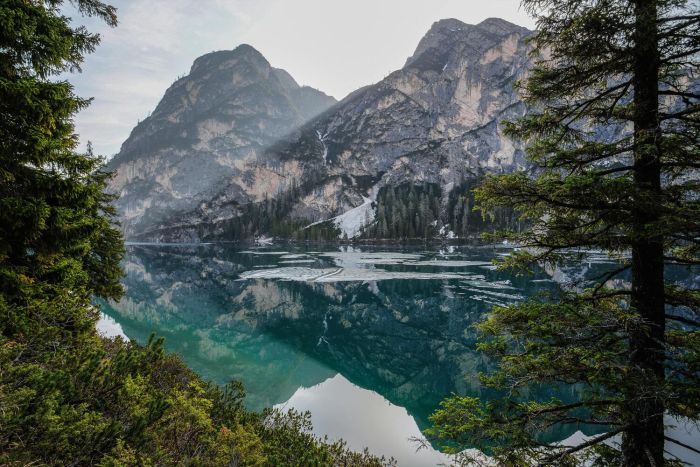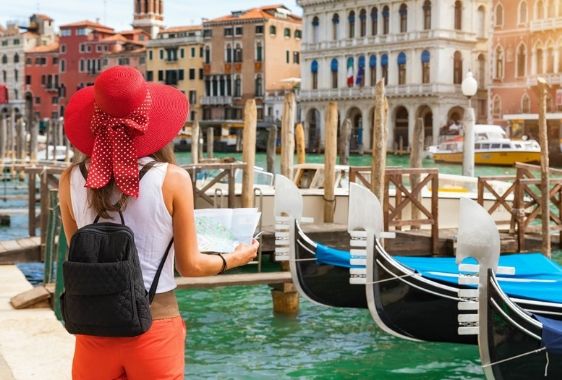Tourist information that will help you plan upcoming trip to Rome, Italy. Our website features many pages of tourist information on Rome, the eternal city. Tourist information on Rome that includes practical information for the visitor as well as information on the rich and fascinating history of Rome than spans over 2,000 years.
For those intrepid travellers that are looking to enjoy a deeper understanding of Rome's history we offer a wide variety of tours through the tourist visiting Rome can enjoy an entertaining and educative tour of Rome.
Weather in Rome, Italy
Rome's mild climate makes it popular to visit year-round; however, spring and autumn are without doubt the best times to visit, with generally sunny skies and mild temperatures (although late autumn, November, can be rainy).
Unfortunately, these times are also the peak tourist season, when the tour buses pour in and tourists are herded around like cattle. July and August are unpleasantly hot, and Romans traditionally desert the stiflingly hot city in August, with many businesses closing; try to avoid visiting at this time. From December to February there is briskly cold weather, although it's rarely grey and gloomy.
How to get to Rome
The main airport is Leonardo da Vinci, also known as Fiumicino. The other airport is Ciampino, where most domestic, and some international, flights arrive. You can get a flight from just about anywhere in the world to Rome. Departure tax is always prepaid with your air ticket into or out of Italy.
Leonardo da Vinci (Fiumicino) airport is 26km (16mi) southwest of the city. One of the most convenient ways to get into town is by the Leonardo Express, the 30-minute Fiumicino-Stazione Termini direct train, which runs half-hourly from the airport. You can also get a train from the airport to Trastevere, Ostiense and Tiburtina.
A night bus runs to Stazione Tiburtina. If you're driving, an autostrada runs from the airport to the city via EUR - it's a 45-minute drive and will cost you a small fortune by taxi. Rome's other airport is Ciampino, about 20km (12mi) southeast of the city. From there you can catch a LiLa/Cotral bus that connects with a subway to Stazione Termini, or you can drive down the Via Appia Nuova.
Public Transportation in Rome
Buses run from various city bus stop to the Lazio region and from Stazione Tiburtina to other destinations throughout Italy. Eurolines and Flixbus are the main carriers for other European destinations, leaving from opposite Tiburtina. There are regular train connections to all the major cities in Italy and Europe from Termini station. Trains are comfortable and fast. The main road connecting Rome to the north and south of Italy is the Autostrada del Sole, which connects with the ring road circling the city.
Rome's buses, trams, subway and suburban railways are part of an integrated system run by ATAC and Metro-bus tickets cover all forms of transport. Buy before you board though; there are hefty fines if you don't, even for tourists. There's also a private network of J buses.
Most of the main buses terminate at the bus station outside Stazione Termini (where you can get a map of the bus routes). The city's Metro service (which is convenient for many of Rome's sights) has two lines, both of which go through Termini. The above-ground rail network isn't much use to most visitors.
Driving in Rome is not recommended - especially on a motorbike or moped. Most of the historic centre of Rome is closed to normal traffic, although you will be allowed to drive to your hotel, and parking is a nightmare. If you'd rather leave the driving to someone else, you can pick up a cab from one of the city's many taxi ranks or phone one any time of day.
Be warned though, taxis are notoriously expensive, and if you call a cab, the meter is turned on as soon as you call, rather than when you are picked up. Cycling is hazardous, but possible - hills, crazy drivers and cobblestones not-withstanding. The historic centre of Rome is relatively small and quite manageable on foot, but remember to wear comfortable shoes as most streets are made of cobbled stones that make walking in high heels a major challenge.







